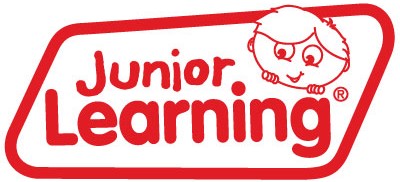CVC Words

Understanding CVC Words: A Key to Early Literacy Development
When it comes to teaching young learners how to read and write, one of the foundational building blocks is mastering CVC words. These simple words are an essential part of the phonics curriculum and play a critical role in helping children understand the relationship between letters and sounds. But what exactly are CVC words, and why are they so important in the journey to literacy?
What Are CVC Words?
CVC stands for Consonant-Vowel-Consonant, which refers to a three-letter word structure where the first letter is a consonant, the second is a vowel, and the third is another consonant. These words are usually simple and follow a regular, predictable pattern that makes them perfect for early readers to decode.
Examples of CVC words include:
- cat
- dog
- bat
- pig
- sun
- map
In each of these words, the first and last letters are consonants (C), and the middle letter is a vowel (V). The vowel sound in these words is typically short, which is another key feature of CVC words.
Why Are CVC Words Important?
1. Building Phonemic Awareness
CVC words are great tools for teaching phonemic awareness—the ability to hear, identify, and manipulate individual sounds (phonemes) in words. Since CVC words are short and simple, they allow children to focus on each individual sound. For example, in the word “cat,” a child learns to identify and blend the sounds /k/ /æ/ /t/.

(Rainbow CVC Objects)
2. Introducing Sound Blending
CVC words give children the opportunity to practice blending sounds together. Blending is the process of saying each individual sound in a word and then combining those sounds to say the word as a whole. For instance, saying "c" "a" "t" and blending them to say "cat" is a crucial skill for reading.

(CVC Builders Activity Cards)
3. Supporting Spelling Skills
Since CVC words follow a simple pattern, they are easier for young children to spell. By practicing with CVC words, children learn the relationship between letters and sounds, which forms the foundation for more complex spelling patterns later on.

(CVC Tri-Blocks Tub)
4. Boosting Confidence in Reading
Mastering CVC words can be a huge confidence booster for early readers. When children begin to recognise and decode these simple words, they feel more capable of reading independently. This builds motivation and a love for reading, which is essential for their ongoing literacy development.

(Letters & Sounds Phase 2 Set 2 Fiction)
Teaching CVC Words: Tips for Parents and Educators
1. Use Phonics Games
Make learning CVC words fun by incorporating interactive games. For example, you can play a matching game where children match the CVC word with a picture (e.g., "cat" with a picture of a cat). You can also use letter tiles or magnetic letters to build CVC words together.

(CVC Bingo)
2. Practice Sounding Out
Encourage your child to sound out each letter in a word before blending them together. This practice helps them develop the skill of segmenting words into individual sounds, which is crucial for reading fluency.

(CVC Blox - Rainbow Phonics)
3. Read CVC Books
There are many beginner books specifically designed for children who are just learning to read. These often feature a high frequency of CVC words, making them perfect for early readers. Reading these books repeatedly can help reinforce the sound-letter connection.

(Letters & Sounds Phase 2 Set 2 Non-Fiction)
4. Incorporate Rhyming
Rhyming is a fun way to reinforce CVC word patterns. For example, after reading the word “cat,” you can explore other rhyming words like “bat,” “hat,” and “rat.” This not only strengthens phonetic awareness but also introduces new vocabulary.

(CVC Flips)
5. Practice Writing CVC Words
Writing is just as important as reading when it comes to literacy development. Encourage your child to write CVC words by sounding out each letter. You can start with a list of familiar words and gradually increase the difficulty as they become more confident.
Progressing Beyond CVC Words
Once children have mastered CVC words, they can start expanding their literacy skills by progressing to more complex word structures. These include:
- CVCC words (Consonant-Vowel-Consonant-Consonant): Examples: "jump," "sand," "bump."
- CCVC words (Consonant-Consonant-Vowel-Consonant): Examples: "clip," "slam," "plan."
- Silent e words: Examples: "cake," "bike," "hope."
Each new level of complexity builds on the skills developed with CVC words, helping children advance toward more fluent reading and writing.
Final Thoughts
CVC words are more than just simple building blocks of language—they are a gateway to the world of reading and writing. By focusing on these short, manageable words, children can develop essential phonics skills that will serve them well throughout their literacy journey. Whether you’re a parent or a teacher, incorporating CVC words into your child’s learning routine is a great way to set them up for success in reading.
Happy learning!
